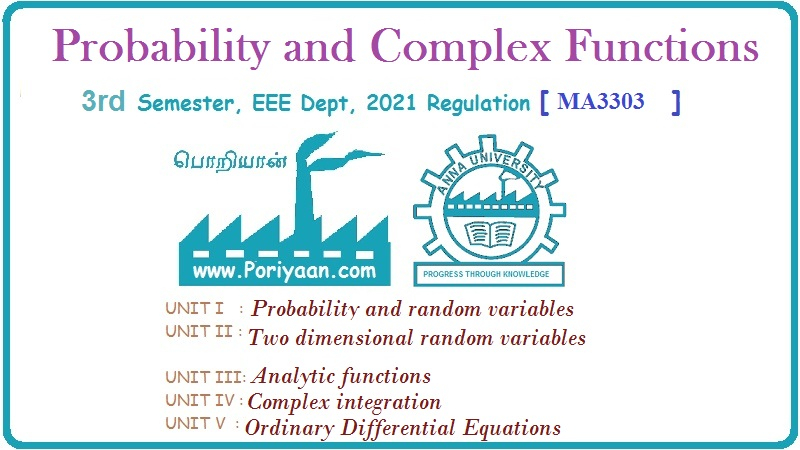Probability and complex function: Unit II: Two dimensional random variables
Two dimensional random variables
Introduction
The random variable was found to be a powerful concept. It enabled many realistic problems to be described in a probabilistic way such that practical measures could be applied to the problem even though it was random.
UNIT - II
TWO DIMENSIONAL RANDOM VARIABLES
Joint
distributions Marginal and conditional distributions - Covariance - Correlation
and Linear Regression - Transformation of random variables. Central limit
theorem (for independent and identically distributed random variables)
Introduction
In
unit 1, various aspects of the theory of single random variable were studied.
The random variable was found to be a powerful concept. It enabled many
realistic problems to be described in a probabilistic way such that practical
measures could be applied to the problem even though it was random. From
knowledge of the probability distribution or density function of impact
position, we can solve for such practical measures as the mean value of impact
position, its variance, and skew. These measures are not, however, a complete
enough description of the problem in most cases. It may be necessary to extend
the theory to include several random variables. Fortunately, many situations of
our engineering problems are handled by the theory of two random variables.
Hence, such important concepts as auto correlation, cross-correlation and
covariance functions, which apply to random processes, are based on two random
variables.
1.
Two-dimensional random variable: Let S be the sample
space. Let X = X (s) and Y = Y (s) be two functions each assigning a real
number to each outcome s E S. Then (X, Y) is a two-dimensional random variable.
2.
Two-dimensional discrete random variables: If the possible
values of (X, Y) are finite or countably infinite, then (X, Y) is called a
two-dimensional discrete random variable. When (X, Y) is a two-dimensional
discrete random variable the possible values of (X, Y) may be represented as
(xi, yj), i = 1, 2, ... n, j = 1, 2, 3, ... m.
3.
Two-dimensional continuous random variables: If (X, Y) can
assume all values in a specified region R in the XY plane (X, Y) is called a
two-dimensional continuous random variable.
Probability and complex function: Unit II: Two dimensional random variables : Tag: : Introduction - Two dimensional random variables
Related Topics
Related Subjects
Probability and complex function
MA3303 3rd Semester EEE Dept | 2021 Regulation | 3rd Semester EEE Dept 2021 Regulation
